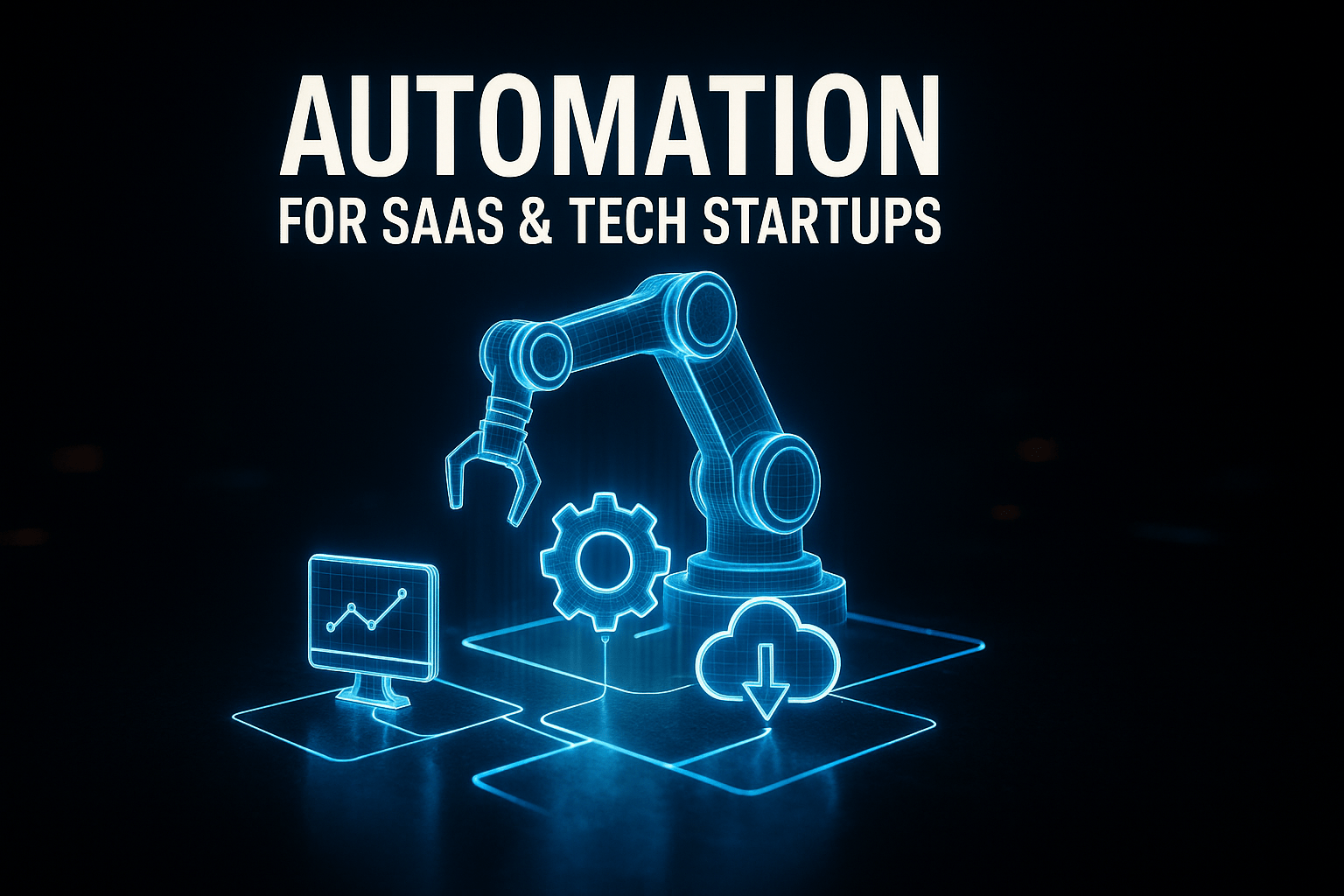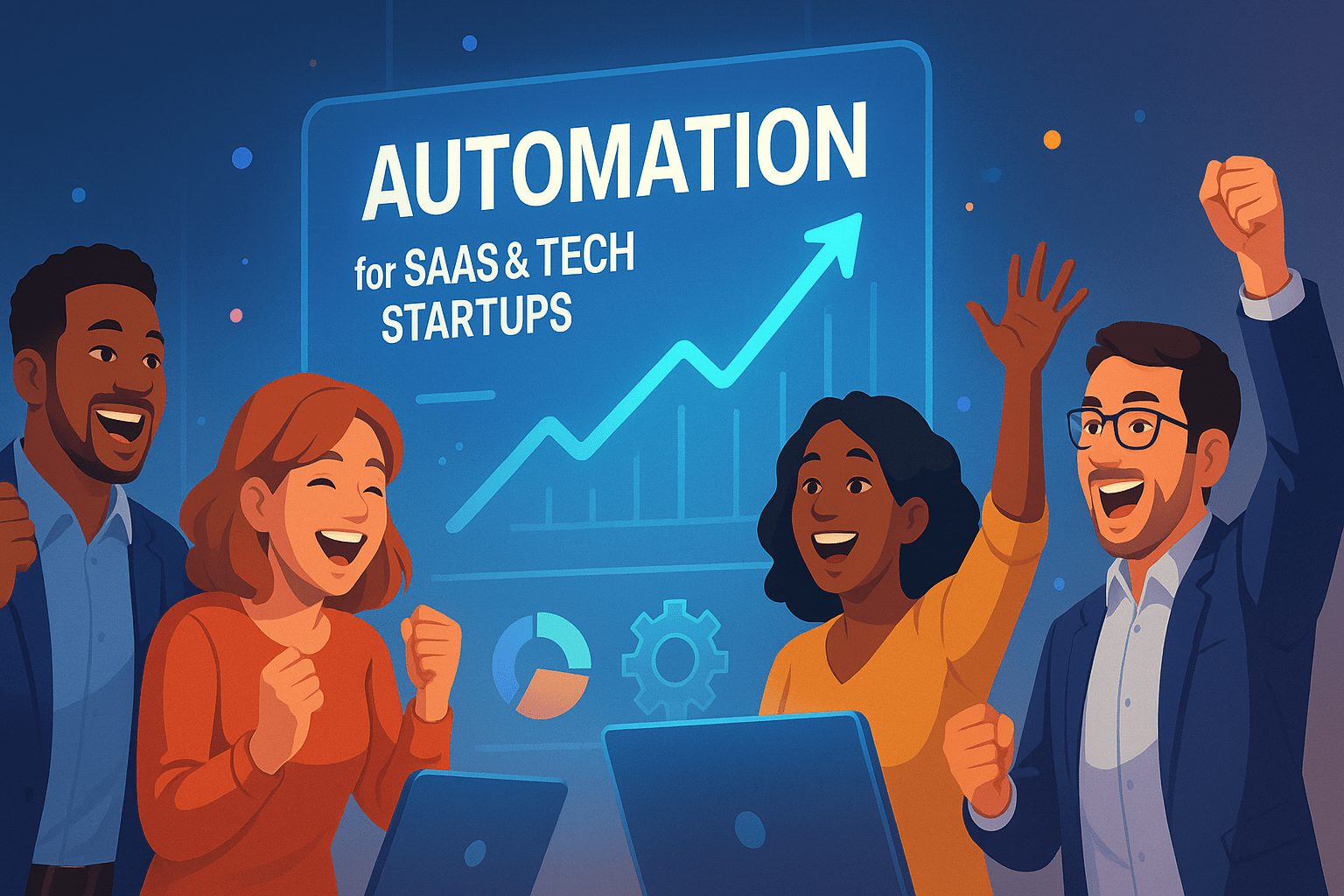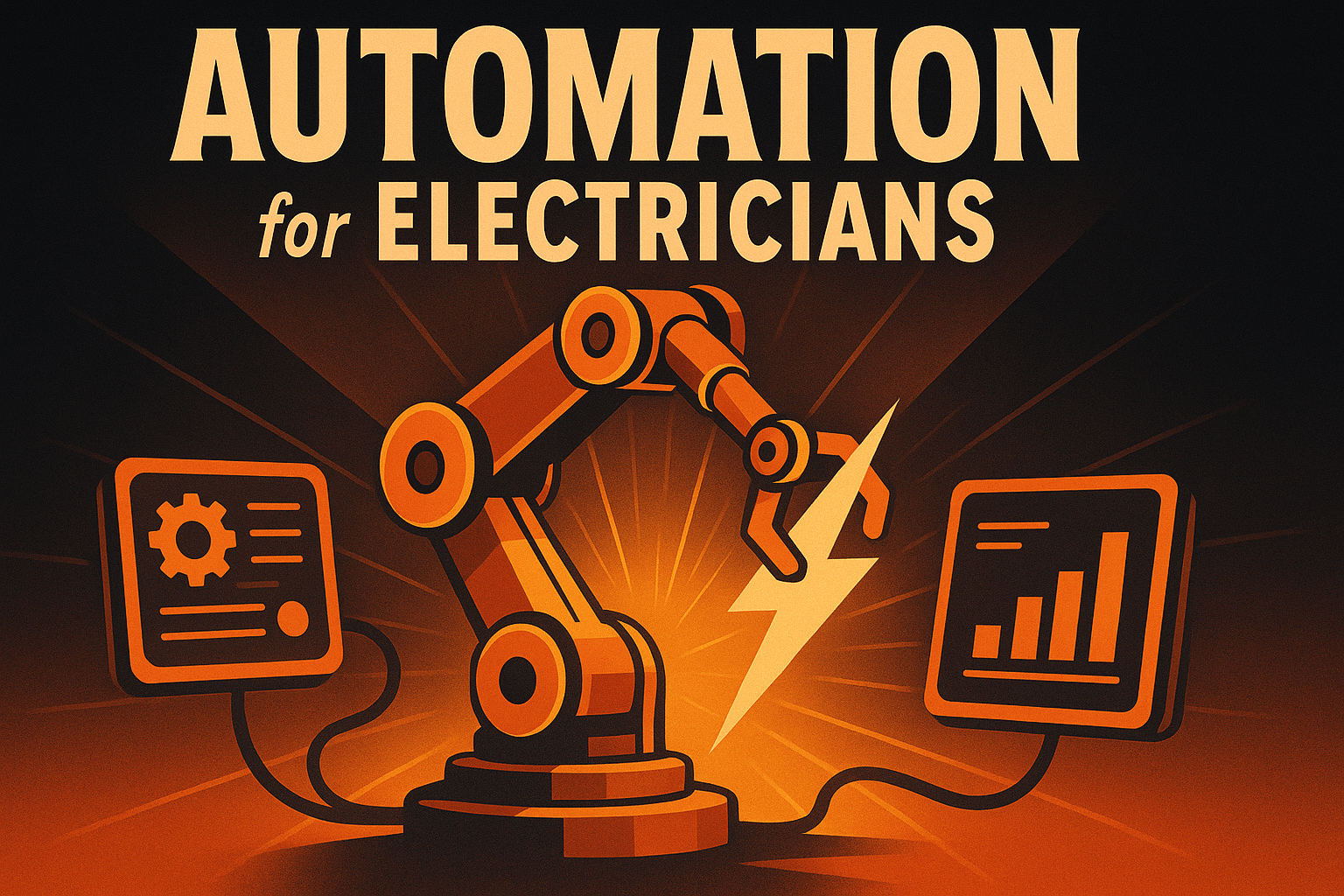Automation Strategies That Help SaaS & Tech Startups Scale Faster
by Design Delulu Editorial · October 6, 2025

The difference between scaling and stalling often comes down to one thing: how well you automate your growth systems.
Why Automation Matters for SaaS & Tech Startups
For fast-growing SaaS and tech startups, manual processes become bottlenecks almost overnight. What worked at 10 customers breaks at 100, and what functioned with a team of five fails with fifty. The startups that succeed understand that automation isn't just about saving time—it's about creating scalable systems that turn data into decisions, visitors into customers, and chaos into predictable growth.
Modern SaaS companies face unique challenges: complex customer journeys that span multiple touchpoints, attribution questions that traditional analytics can't answer, and the constant pressure to prove ROI on every marketing dollar. Without proper automation infrastructure, you're flying blind—making strategic decisions based on incomplete data, losing leads in manual handoffs, and watching competitors outpace you with leaner teams. The solution isn't working harder; it's building smarter systems that scale alongside your ambitions.

The Core Components of SaaS Automation Success
Effective automation for SaaS startups rests on four foundational pillars that work together to create a measurement and optimization engine. First, comprehensive event and ecommerce tracking through GA4 and server-side tagging ensures you capture every meaningful interaction across your product and marketing funnel. This granular data collection goes beyond basic pageviews to track feature adoption, trial behaviors, upgrade triggers, and churn signals that matter for product-led growth.
Second, source-of-truth dashboards built in platforms like Looker Studio transform raw data into actionable intelligence. These aren't vanity metric dashboards—they're focused on revenue-driving KPIs that align with your specific growth stage and business model. Whether you're optimizing for trial-to-paid conversion, expansion revenue, or customer acquisition cost, your dashboards should tell the complete story at a glance.
Third, sophisticated attribution modeling matches your actual funnel complexity. SaaS buying journeys rarely follow simple last-click patterns. Your automation system needs to account for content touches, product trials, sales conversations, and community engagement to accurately credit what's really driving pipeline. Custom attribution models help you understand which channels deserve more investment and which are riding coattails.
Finally, data governance ensures consistency and cleanliness at scale. As your team grows and your tech stack expands, maintaining data integrity becomes critical. Proper governance includes naming conventions, validation rules, documentation, and regular audits that prevent the data decay that plagues fast-moving startups.
Building Your Automation Framework: A Proven Process
Implementing automation doesn't require a massive upfront investment or six-month timelines. The most successful SaaS startups follow a sprint-based approach that delivers value quickly while building toward comprehensive coverage.
Discovery & Goals: Every engagement begins with clarity. We map your customer journey, identify the highest-impact conversion points, and establish success metrics that tie directly to revenue. This phase involves stakeholder interviews, funnel analysis, and constraint mapping to ensure the automation strategy fits your resources and timeline. The outcome is a prioritized roadmap that focuses on quick wins while architecting for long-term scale.
Blueprint: With goals defined, we design the complete measurement architecture. This includes your tracking plan (which events to capture and why), data layer specifications, tool configurations, dashboard wireframes, and attribution logic. The blueprint serves as both a build guide and documentation for your team. We pressure-test the design against edge cases and ensure it can accommodate future growth without requiring rebuilds.
Build & Launch: Implementation moves quickly when the blueprint is solid. We configure GA4 properties, set up server-side tagging for accuracy and performance, implement tracking across key pages and product features, build initial dashboards, and conduct thorough QA testing. This phase typically includes a soft launch period where we validate data collection before promoting dashboards to the full team. Every deployment includes documentation and knowledge transfer to empower your team.
Optimize: The real value emerges in continuous improvement. We establish weekly review cadences to analyze performance, identify optimization opportunities, and iterate on what's working. This might mean refining tracking for new features, adjusting attribution windows based on sales cycle data, or building additional dashboard views for different stakeholders. Quarterly resets ensure your automation evolves with your business.

Strategic Best Practices for Maximum Impact
The difference between automation that sits unused and systems that drive decisions comes down to strategic implementation. Start by prioritizing your highest-impact pages and flows first. For most SaaS startups, this means homepage, pricing page, signup flow, and key product activation points. Getting these right delivers immediate value and builds momentum for broader rollout.
Pair creative with measurement from day one. Every landing page variation, email campaign, and product feature should have associated KPIs and tracking. This discipline transforms marketing from a cost center into a data-driven growth engine. When you can definitively answer which messaging drives trials or which onboarding flow increases activation, you make better decisions faster.
Build with systems and templates that enable scaling. Create reusable tracking patterns, dashboard templates, and documentation standards that new team members can follow. The goal is to make good data practices the path of least resistance. When launching a new campaign is as simple as cloning a template and updating parameters, consistency happens naturally.
Close the loop with regular review cadences. Weekly performance reviews keep everyone aligned on what's working, while quarterly strategic resets ensure your automation evolves with your business model. These rituals transform data from something that sits in dashboards into insights that shape roadmaps and budgets.
SaaS-Specific Implementation Strategies
Generic automation approaches fail for SaaS because they ignore the unique characteristics of software businesses. Start by mapping search intent to your specific buyer stages. Someone searching for "project management software" is in a different place than someone looking for "Asana alternatives" or "how to implement agile workflows." Your tracking and attribution should recognize these distinctions.
Use social proof and outcome data early in the customer journey. SaaS buyers want evidence before trials, not after. Track how case studies, customer logos, and ROI data influence conversion rates. This intelligence helps you optimize content placement and messaging across the funnel.
Establish and maintain a single source of truth dashboard that executive, marketing, sales, and product teams all reference. Competing definitions of "qualified lead" or "activated user" create organizational friction and bad decisions. Your automation system should enforce consistent definitions and make these metrics accessible to everyone who needs them.
Embrace rapid iteration over perfect planning. The SaaS landscape moves quickly, and your automation needs to keep pace. Ship small improvements consistently rather than waiting for comprehensive overhauls. Track week-over-week improvements in your key metrics and let compounding gains drive growth. A 2% weekly improvement in trial-to-paid conversion compounds to doubling your conversion rate in just nine months.
What You'll Receive
- Comprehensive Tracking Plan: Detailed documentation of events, parameters, and implementation requirements mapped to your customer journey
- GA4/Server-side Configuration: Fully configured analytics properties with server-side tagging for accurate, privacy-compliant measurement
- Custom Dashboards: Role-specific dashboards in Looker Studio or your preferred platform, focused on actionable metrics
- Attribution Model Settings: Custom attribution logic that reflects your actual sales cycle and touchpoint influence
- Data Governance Framework: Documentation, naming conventions, and quality assurance processes to maintain data integrity

Frequently Asked Questions
Let’s level up your SaaS & Tech Startups business
Need services that actually move the needle for SaaS & Tech Startups? See our approach, pricing, and timelines—then book a quick call.
Additional Resources
- Schedule Your Strategy Session
Book a 30-minute consultation to discuss your automation needs, growth goals, and custom implementation roadmap
- View Our SaaS Portfolio
Explore case studies and results from SaaS and tech startup clients who scaled with our automation frameworks
- Free SaaS Growth Tools
Access complimentary calculators, templates, and resources including tracking plan builders and attribution modeling guides
Related Reading

Discover how automation for electricians streamlines scheduling, invoicing, lead tracking, and customer follow-ups to boost revenue and efficiency. Get started today.

Discover how automation streamlines furniture & home decor operations with GA4 tracking, attribution modeling, and data-driven dashboards. Get your 90-day implementation roadmap.
